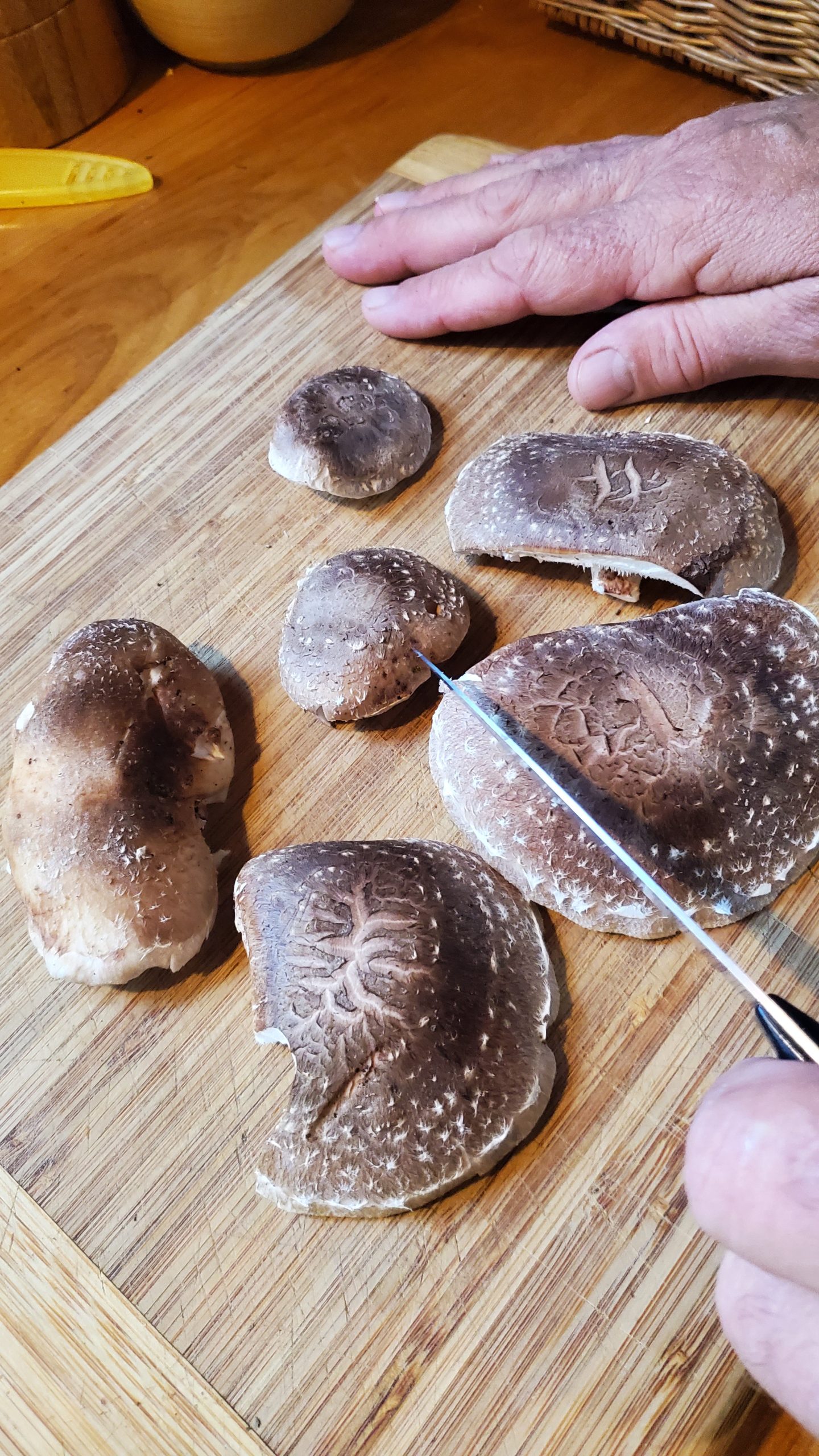
By Karen Cohen
Grow Your Own
Two years ago, I wrote about fun fungi. I hope you were inspired then to start growing some mushrooms of your own. We buy inoculated logs and also bags of spores to put into our own cut logs. Result, we grew and still grow mushrooms! It is so much fun though a bit unpredictable. Like all things from nature, you can guess on timing and weather conditions, but we know how that goes.
Here’s the process of inoculating cut logs with mushroom spores that you buy online or locally at our farmers’ market. First harvest logs from the woods that are freshly fallen or cut some yourself. Trees recommended for this project are hardwood species such as birch, oak, maple, and beech. Cut 3-4 inch thick logs in lengths of three feet. Let these rest in a sheltered place out of the hot sun and wind for two weeks. The main reason you want to start out with freshly fallen and identified trees is so that you are certain that any mushrooms that pop up on these logs are from spores you used and not spores which were already on dead wood or on the ground. Factoid: spores can be carried by the wind and that includes good and harmful spores. They can survive for up to a few weeks given the right conditions.
We buy bags of mushroom spores which are clearly identified and grown by mushroom vendors just for the purpose of inoculating logs. When your logs are done resting, time to get out the drill and make holes about ½ inch in diameter. Then using gloves for sanitation purposes, take some of your mushroom spawn and fill the holes with it. Some companies sell mushroom “plugs” which are easy to tap into the holes. One log can take up to 30 plugs.
Sealing wax is the next step to close up the holes and the spawn. Soy wax is flexible, and you can buy that in 5 ounce bags online. Use a slow cooker for a slow melting process. When the wax is softened, take a small brush and paint each drilled hole with the wax as a sealant. Label each log with the type of mushroom spore used and then wait. Logs can stay outside in the shade over winter or any month of the year. You can store the logs inside a cool root cellar that has some moisture in the air. The first bloom may take six months or so.
Fruiting will occur when everything in the universe of mushrooms lines up! Once the logs have produced the first flush of shrooms, you can get a few more rounds going by soaking (known as forcing) your logs in cold spring water for twenty-four hours. Tap water has chlorine and is not recommended. Usually within a week or so, you will see mushrooms popping up through the holes again. Success. Snip off fresh mushrooms and you can refrigerate them for later usage. If you are waiting for the mushrooms to grow bigger on the logs, they do grow big overnight and then start to decline in freshness. If you see some; take them, they’re yours!
Some of the most edible and delicious mushrooms to try are shiitake and oyster mushrooms. Sauté your mushrooms first and then add to an omelet, or try sautéed garlic, onions, and mushrooms as a side dish, or sautéed in butter and piled over a good steak! Yum. You will be hooked on the distinct flavor that shrooms can add to food.
The Mushroom Council contends that mushrooms contribute to our health. Selenium, riboflavin, and B vitamins are packed into mushrooms. Raw mushrooms taste entirely different from those cooked. We slice up raw Portobello mushrooms in our salad because they have a mild flavor. Cooking anything will destroy not only toxins but also some nutrients. Take this warning, do NOT eat shiitake mushrooms raw. It may cause a rash within two days or so after eating it. Topical creams will help, and the rash usually goes away in a few days. https://www.mushroomcouncil.com.
Some folks wonder if they should wash and rinse off mushrooms. We do. When you harvest mushrooms from the wild, you may find tiny bugs that crawl in and out of the gills. Use a vegetable brush and gently remove the bugs and any dirt particles. Soaking the mushrooms with water will result in soggy mushrooms since they are like sponges. That’s a no no.
For more information on growing mushrooms, please go to: https://northspore.com/pages/grow-mushrooms-on-logs-videos
(Karen Cohen is an organic grower, vegetable lover, and avid nature explorer. Email your tips and comments to natureswaykaren@gmail.com, and Happy Growing!)


